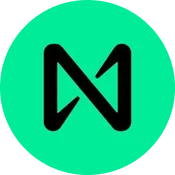When examining the blockchain landscape, two platforms stand out for their unique visions: Near, with its focus on scalability and developer-friendly features, and Decentraland, the pioneer in decentralized virtual worlds. While Near aims to build a robust Layer 1 blockchain infrastructure capable of supporting diverse applications, Decentraland offers an immersive, user-driven metaverse experience rooted in blockchain-backed virtual land ownership. This comparison delves into their technical architectures, use cases, and ecosystem strengths to help crypto enthusiasts and investors understand which platform aligns best with their interests and goals.
Short on time? Jump to Near vs Decentraland Comparison
Understanding Near and Decentraland ?
Near Protocol is a scalable blockchain platform designed to support decentralized applications with high throughput and low latency. It employs innovative technologies like Nightshade 2.0 sharding and a Thresholded Proof-of-Stake consensus, which collectively enhance transaction speed, scalability, and energy efficiency. Near's focus is on creating an accessible, developer-friendly environment that can host a wide range of applications, from DeFi to AI infrastructure, positioning itself as a versatile Layer 1 solution.
Decentraland, on the other hand, is a blockchain-based virtual world that enables users to buy, sell, and develop virtual land parcels represented as NFTs on the Ethereum blockchain. Its architecture comprises components like Catalyst servers for hosting content and the World Explorer client, which allows users to explore and interact within the metaverse. Decentraland's core appeal lies in its user-generated content, social interactions, and immersive experiences, making it a leading example of a decentralized metaverse driven by blockchain ownership.
While Near is primarily focused on building a scalable, interoperable infrastructure for a wide range of decentralized applications, Decentraland emphasizes creating a user-centric virtual universe where digital assets and land ownership are secured by blockchain technology. Their different visions reflect their core ambitions: Near as a blockchain backbone for various dApps, and Decentraland as a metaverse platform fostering social and creative interactions.
Both platforms are actively evolving, with Near launching significant upgrades like Nightshade 2.0 to boost scalability, while Decentraland continuously enhances its user experience with new features and performance improvements. Understanding their technical foundations and ecosystem dynamics can provide insights into their potential roles in the future digital landscape.
Key Differences Between Near and Decentraland
Purpose & Core Focus
- Near: Near aims to provide a scalable, developer-friendly blockchain infrastructure capable of hosting a variety of decentralized applications, from finance to AI. Its architecture is built to support high throughput and interoperability, making it a backbone for future decentralized ecosystems.
- Decentraland: Decentraland focuses on creating a decentralized virtual universe where users can buy, develop, and monetize virtual land. Its primary purpose is to facilitate social interactions, digital asset ownership, and immersive experiences within a blockchain-secured metaverse.
Technical Architecture
- Near: Near employs the Nightshade 2.0 sharding mechanism and a Thresholded Proof-of-Stake consensus, enabling high scalability and low operational costs. Its stateless validation reduces resource requirements for validators, supporting a high number of transactions per second.
- Decentraland: Decentraland's architecture consists of Catalyst servers for hosting content and a Unity-based client for exploring the world. It uses Ethereum NFTs for land and asset ownership, with a focus on content delivery and peer-to-peer communication within the metaverse.
Ecosystem & Use Cases
- Near: Near's ecosystem includes a broad range of applications, from DeFi and AI infrastructure to NFT marketplaces, supported by a growing developer community and continuous protocol upgrades.
- Decentraland: Decentraland's ecosystem centers around virtual land, art, social events, and branded experiences. Its user base is engaged in creating and monetizing content, hosting events, and exploring a blockchain-backed digital universe.
Tokenomics & Market Position
- Near: NEAR's native token is used for staking, governance, and transaction fees within its scalable blockchain environment. It has seen substantial growth, surpassing a $4 billion market cap, emphasizing its stability and potential.
- Decentraland: Decentraland's native token, MANA, is used for land purchases, transactions, and governance. Despite fluctuations, it maintains a significant presence in the NFT and metaverse sectors, with a market valuation of around $1.2 billion.
Community & Adoption
- Near: NEAR boasts a vibrant developer community, numerous integrations, and a focus on interoperability, attracting projects across DeFi, AI, and NFT sectors.
- Decentraland: Decentraland has cultivated a dedicated user base attracted by its immersive experiences, virtual events, and partnerships with brands and artists, fostering a lively social ecosystem.
Near vs Decentraland Comparison
| Feature | ✅ Near | ✅ Decentraland |
|---|---|---|
| Primary Purpose | Blockchain infrastructure for dApps, AI, DeFi | Decentralized virtual world and social platform |
| Technical Architecture | Nightshade 2.0 sharding, stateless validation | Catalyst servers, Unity client, Ethereum NFTs |
| Native Token Use | Staking, governance, transaction fees | Land purchases, content transactions |
| Market Cap | Over $4 billion | $1.2 billion |
| Main Ecosystem Focus | DeFi, AI, NFT infrastructure | Virtual land, art, social events |
| User Engagement | Growing developer and project community | Active virtual social and event-based user base |
Ideal For
Choose Near: Developers and investors looking for a scalable, versatile blockchain platform supporting a wide range of dApps.
Choose Decentraland: Users and creators interested in immersive virtual worlds, digital land ownership, and social experiences.
Conclusion: Near vs Decentraland
Near and Decentraland exemplify two distinct paths within the blockchain ecosystem: one as a scalable, multi-purpose infrastructure and the other as an innovative metaverse platform. Near's emphasis on high throughput, interoperability, and developer-centric tools positions it as a foundational blockchain for future decentralized applications. Conversely, Decentraland's focus on user-generated content, social interactions, and digital ownership has made it a leader in the virtual world space, attracting brands, artists, and a vibrant community.
Choosing between Near and Decentraland depends on your interests: whether you seek a robust platform for building decentralized services or an engaging universe for social and creative expression. Both platforms are evolving rapidly, promising exciting developments that could shape the future of blockchain technology and digital social spaces.





